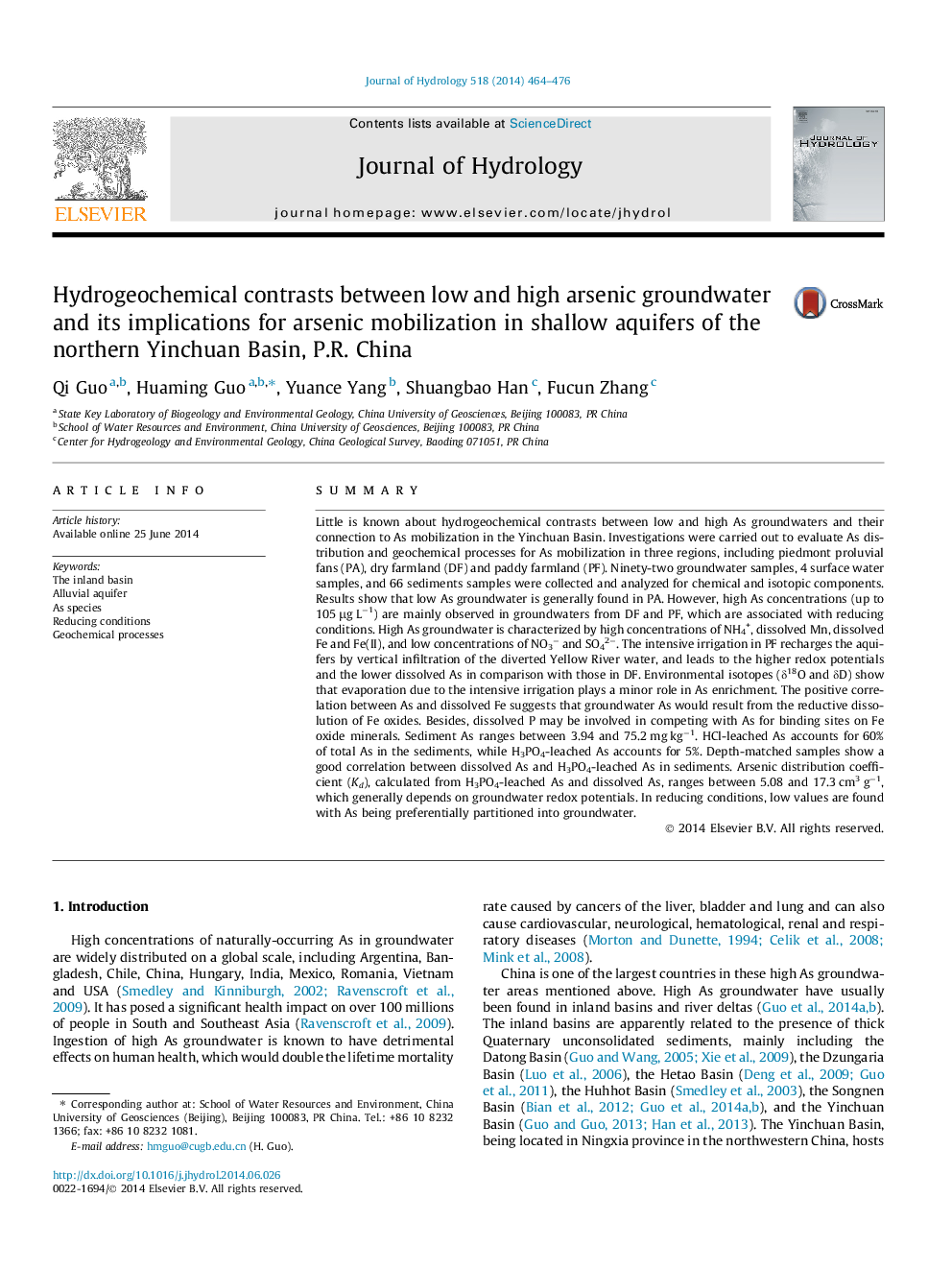| کد مقاله | کد نشریه | سال انتشار | مقاله انگلیسی | نسخه تمام متن |
|---|---|---|---|---|
| 4575974 | 1332900 | 2014 | 13 صفحه PDF | دانلود رایگان |

• Chemical and isotopic differences between low and high As groundwaters.
• Hydrogeological controls on groundwater chemistry and As concentrations.
• Influence of irrigation patterns on groundwater geochemistry and As mobilization.
• Distribution coefficient of As between sediments and groundwaters is first evaluated.
SummaryLittle is known about hydrogeochemical contrasts between low and high As groundwaters and their connection to As mobilization in the Yinchuan Basin. Investigations were carried out to evaluate As distribution and geochemical processes for As mobilization in three regions, including piedmont proluvial fans (PA), dry farmland (DF) and paddy farmland (PF). Ninety-two groundwater samples, 4 surface water samples, and 66 sediments samples were collected and analyzed for chemical and isotopic components. Results show that low As groundwater is generally found in PA. However, high As concentrations (up to 105 μg L−1) are mainly observed in groundwaters from DF and PF, which are associated with reducing conditions. High As groundwater is characterized by high concentrations of NH4+, dissolved Mn, dissolved Fe and Fe(II), and low concentrations of NO3− and SO42−. The intensive irrigation in PF recharges the aquifers by vertical infiltration of the diverted Yellow River water, and leads to the higher redox potentials and the lower dissolved As in comparison with those in DF. Environmental isotopes (δ18O and δD) show that evaporation due to the intensive irrigation plays a minor role in As enrichment. The positive correlation between As and dissolved Fe suggests that groundwater As would result from the reductive dissolution of Fe oxides. Besides, dissolved P may be involved in competing with As for binding sites on Fe oxide minerals. Sediment As ranges between 3.94 and 75.2 mg kg−1. HCl-leached As accounts for 60% of total As in the sediments, while H3PO4-leached As accounts for 5%. Depth-matched samples show a good correlation between dissolved As and H3PO4-leached As in sediments. Arsenic distribution coefficient (Kd), calculated from H3PO4-leached As and dissolved As, ranges between 5.08 and 17.3 cm3 g−1, which generally depends on groundwater redox potentials. In reducing conditions, low values are found with As being preferentially partitioned into groundwater.
Journal: Journal of Hydrology - Volume 518, Part C, 10 October 2014, Pages 464–476